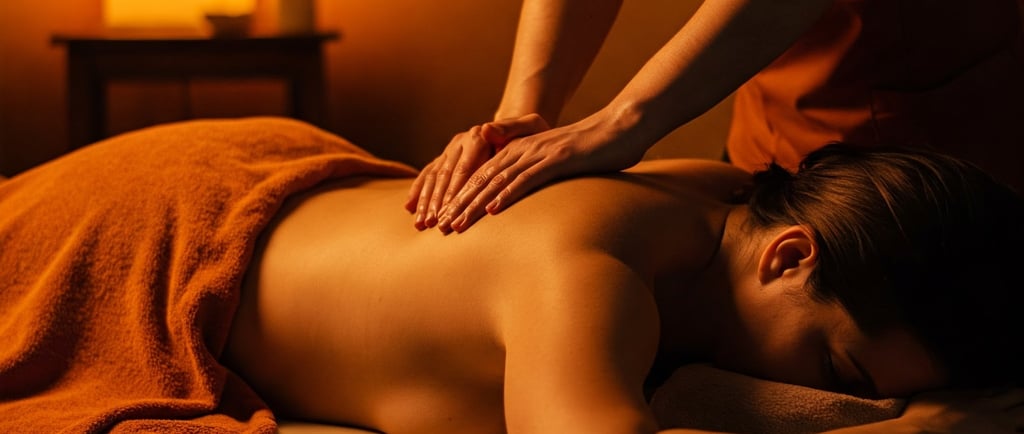Differences between different types of massage (Chinese, Thai, Burmese)


Massage therapy encompasses a diverse range of techniques, each tailored to address specific needs and preferences. Understanding the distinctions among these modalities can help individuals select the most suitable approach for their wellness goals. Here's an in-depth exploration of various massage types and their unique characteristics:
1. Swedish Massage
As one of the most prevalent forms, Swedish massage employs long, flowing strokes, kneading, and circular movements on the superficial layers of muscles. It's designed to promote relaxation, enhance blood circulation, and alleviate muscle tension. This gentle approach is ideal for newcomers to massage therapy or those seeking stress relief.
2. Deep Tissue Massage
Targeting the deeper layers of muscle and connective tissue, deep tissue massage utilizes slow, deliberate strokes and firm pressure. It's particularly beneficial for individuals with chronic muscle tension, injuries, or musculoskeletal disorders. While therapeutic, this modality may cause discomfort during the session due to its intensity.
3. Hot Stone Massage
Incorporating heated stones placed on specific body areas, hot stone massage aims to relax tight muscles and improve blood flow. The warmth from the stones enhances the massage's effectiveness, providing a deeply soothing experience. It's especially suitable for individuals seeking relief from muscle tension without intense pressure.
4. Aromatherapy Massage
Combining gentle pressure with the therapeutic use of essential oils, aromatherapy massage addresses both physical and emotional well-being. The chosen oils can uplift mood, reduce stress, and alleviate symptoms of anxiety and depression. This holistic approach caters to those desiring a sensory experience that promotes overall relaxation.
5. Sports Massage
Designed for athletes and active individuals, sports massage focuses on areas of the body stressed by repetitive movements. Techniques vary based on the sport and individual needs, aiming to enhance performance, prevent injuries, and expedite recovery. It's beneficial both pre- and post-activity to prepare muscles and alleviate soreness.
6. Shiatsu Massage
Originating from Japan, shiatsu involves applying rhythmic pressure using fingers, thumbs, and palms along the body's energy pathways, known as meridians. This technique aims to balance energy flow and support overall health. Shiatsu is performed with the recipient fully clothed and can help reduce stress, tension, and fatigue.
7. Thai Massage
A dynamic form of bodywork, Thai massage combines assisted yoga postures, acupressure, and rhythmic compressions. Practitioners guide clients through a series of movements to stretch and relax the body. This modality enhances flexibility, reduces muscle tension, and promotes energy flow. Sessions are typically conducted on a mat with the recipient dressed in comfortable clothing.
8. Reflexology
Focusing on specific points on the feet, hands, and ears, reflexology is based on the theory that these areas correspond to different body organs and systems. Applying pressure to these points is believed to promote health and balance in the corresponding areas. Reflexology is often sought for relaxation and to alleviate stress-related conditions. WebMD+1Natural Healers+1The Professional Massage Academy+3Wikipédia, l'encyclopédie libre+3Glamour+3
9. Prenatal Massage
Tailored for expectant mothers, prenatal massage addresses the unique discomforts associated with pregnancy, such as back pain, swollen ankles, and fatigue. Techniques are adapted to ensure safety and comfort, often with the client positioned on their side. This nurturing approach promotes relaxation and can improve overall prenatal well-being.
10. Lymphatic Drainage Massage
This gentle technique stimulates the lymphatic system to enhance the removal of toxins and excess fluids. Using light, rhythmic strokes, it can reduce swelling, improve immune function, and promote detoxification. Lymphatic drainage is particularly beneficial for individuals experiencing lymphedema or those recovering from certain medical procedures.
11. Craniosacral Therapy
A subtle form of bodywork, craniosacral therapy involves gentle manipulation of the skull, spine, and pelvis to balance the central nervous system. It's used to treat a variety of conditions, including migraines, chronic pain, and stress-related disorders. The light touch employed makes it suitable for individuals seeking a non-invasive approach.
12. Trigger Point Therapy
Focusing on specific areas of muscle tightness, known as trigger points, this therapy applies concentrated pressure to alleviate localized pain and dysfunction. It's effective for addressing chronic muscle knots and referred pain patterns. Individuals with persistent muscular issues may find relief through this targeted approach.
13. Myofascial Release
This technique targets the fascia, the connective tissue surrounding muscles, to relieve pain and improve mobility. Using sustained pressure and stretching, myofascial release addresses restrictions in the fascia that can cause discomfort and limited movement. It's beneficial for individuals with chronic pain conditions.
14. Abhyanga (Ayurvedic Massage)
Rooted in Ayurvedic medicine, abhyanga involves the application of warm herbal oils with rhythmic strokes to balance the body's energies (doshas). This nurturing practice aims to detoxify, nourish the skin, and promote overall health. It's suitable for those seeking a holistic approach that integrates physical and energetic healing.
